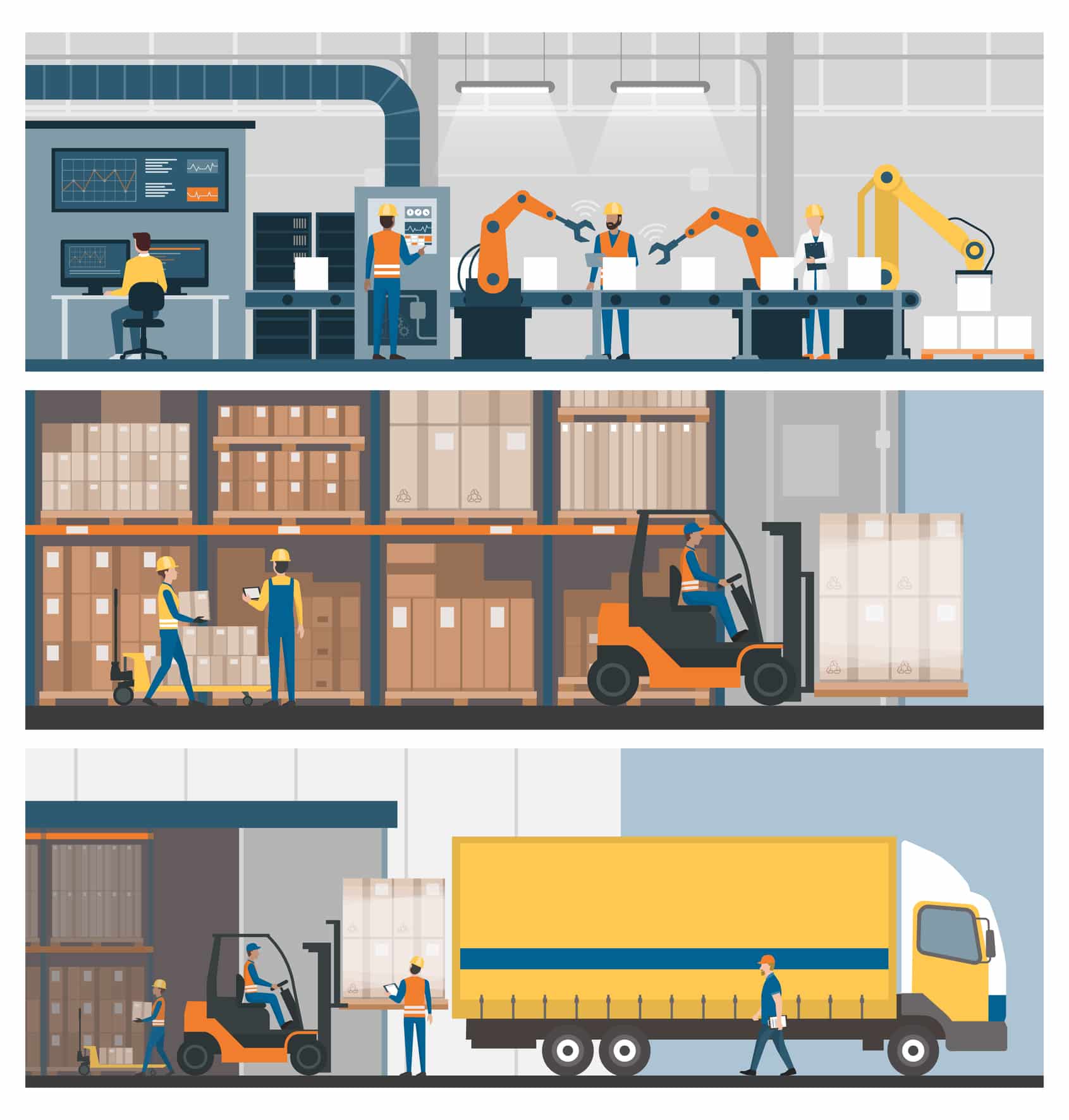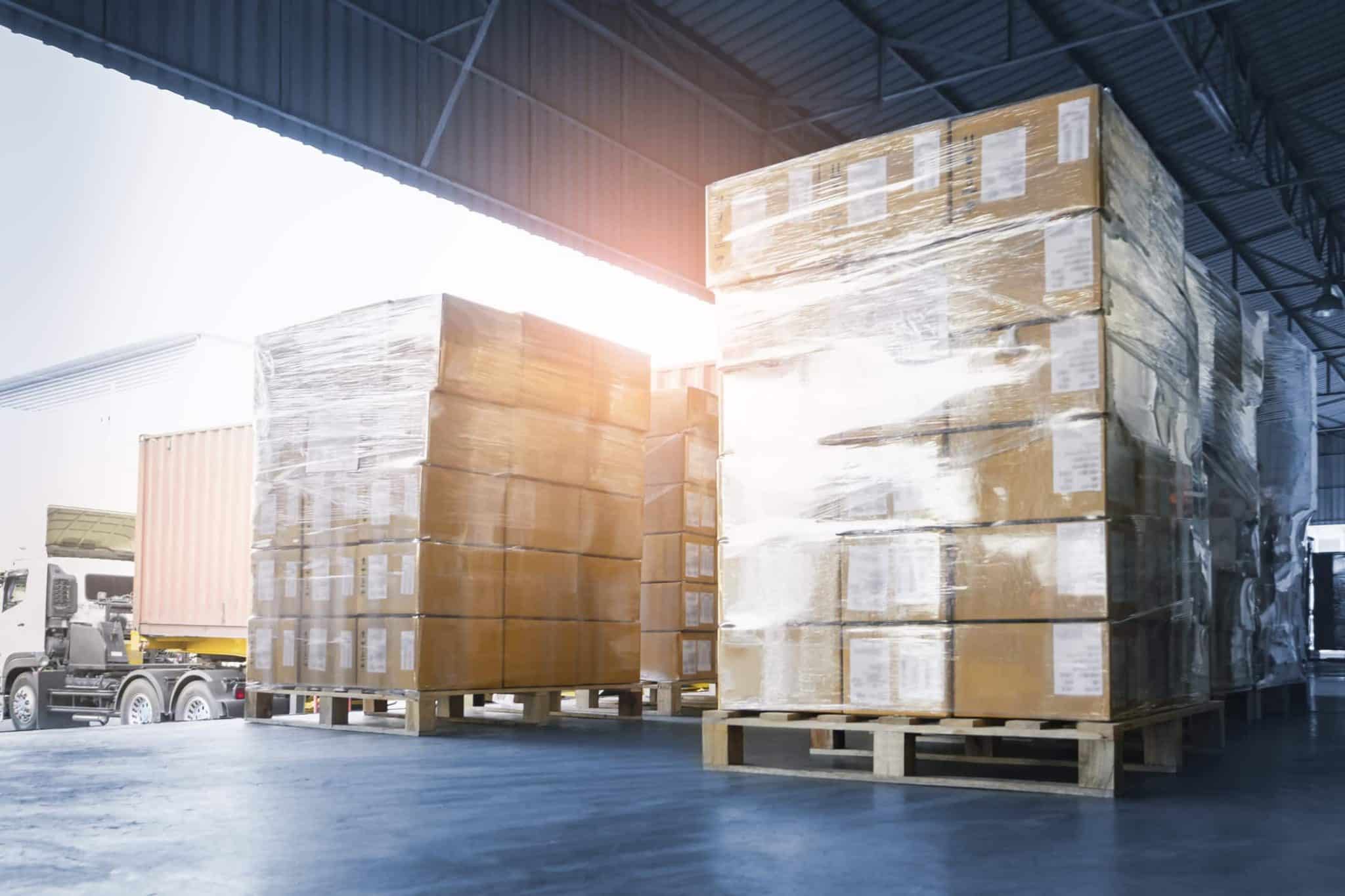Saving money and reducing greenhouse gas emissions don’t have to be separate goals. Today we’ll be discussing how to reduce carbon emissions at distribution centers and dissect the benefits of green distribution. This includes a critical look at company auditing practices and applying alternative sustainable efforts to reduce carbon emissions across the supply chain.
There’s no avoiding the impending shift in business practices to come. Introducing improvements to energy efficiency at distribution centers can yield massive long-term savings and make a serious dent in the carbon emissions crisis.
What is Green Distribution?
Green distribution is a logistics practice that reduces environmental harm by making greener choices along the supply chain. There’s evidence that this practice reduces a business’s carbon footprint and saves money long-term by investing in sustainable choices.
Distribution centers play a massive role in the economy and our communities. With their size and necessity to the supply chain, comes a responsibility to make sure they aren’t obstructive to climate initiatives.
Improvements can be implemented at every level of the supply chain distribution model. With the combined effort, over time businesses will see lower costs, increased efficiency, a boost in customer satisfaction, and a drop in overall emissions.
Benefits of Green Distribution
The benefits of green distribution are found all along the supply chain process. These seemingly minor tweaks to everyday processes have impacts that create ripple effects throughout the business.
Clean energy initiatives aren’t just for socially conscious tech startups or “green” associated brands. These are practices that can benefit almost anyone with large operations looking to reduce costs, increase efficiency, and lower carbon emissions.
- Z Prioritizing efficiency to avoid energy waste
- Z Reducing energy consumption leads to reducing costs
- Z Greener distribution reduces several forms of organizational risk
- Z Adds a competitive edge and an improved service
- Z Opportunity to audit current practices
Cut Costs
The driving force behind green distribution efforts is going to lean on reduced costs for owners/leadership team. Almost all green distribution efforts have a direct correlation to improving efficiency. With that improved efficiency comes reduced time and energy associated with these processes. That unwasted time and energy directly affect the bottom line for businesses, meaning more money back while reducing your carbon footprint. Even small changes like switching to energy-efficient lighting or hiring a mobile waste compaction service can yield major returns and build towards a greener distribution effort.
Increase Efficiency
Improving efficiency is a process that starts with evaluating green distribution methods. Clean energy efforts almost always have a direct correlation to an increase in efficiency.
Start with things like optimizing routes for drivers, being cognizant of ETAs to help freight trips avoid stop-and-go traffic, unnecessary detours, and reducing idle time on the road. These are simple changes to distribution efforts that yield massive results long-term for budgets and improve greenhouse gas emissions.
Sometimes it’s as simple as how seamlessly a team can work together. When everyone is on the same page and operating at a high level, there are fewer opportunities for wasted energy, excess fossil fuel emissions, and unnecessary additional work.

Boost Customer Satisfaction
These improved efficiencies and reduced costs to the supply chain can pass benefits down to your customer base. In turn, this can create a bump in customer satisfaction by building a more efficient operation that allows employees to provide a higher quality of service for customers. For example, improvements to shipment times means cost-savings can be passed down to customers, making them more likely to purchase again.
Now more than ever, we are seeing customers actively seeking more sustainable choices in the market. According to consumer reports, “A desire to help the environment was found to be the primary reason consumers purchase sustainable products and brands. Almost 30% say they want to improve the environment, with 23% wishing to reduce production waste [and] 22% wishing to reduce their carbon footprint.” There’s never been a better time to start implementing these practices into distribution efforts.
Reduce Carbon Emissions
Above all, the driving force behind these changes is seeing a reduction in total carbon emissions as a business. There’s a significant portion of businesses now beginning to adopt carbon reduction goals. Some are dictated by the regulators or market standards that force businesses to achieve certain figures that prove efforts are being made. Whether it’s a conscious effort made by the business or a required change to operation, reducing carbon emissions is a win for the company, the customers, and the environment.
7 Ways to Reduce Carbon Emissions at Distribution Centers
There’s a variety of legitimate approaches to reducing carbon emissions at distribution centers. These opportunities improve energy-efficiency, manage waste, and reduce carbon emissions across the supply chain.
Switch to Sustainable Packaging Materials
A simple place to start is to evaluate your packaging materials. There’s a plethora of sustainable packaging solutions available now. Groups like the Sustainable Packaging Coalition make partnering and networking with sustainable packaging brands easier and assist seamless integration.
If shifting packaging materials seems like a large project, a quick way to improve the packaging process is to evaluate where the areas of excess are prominent. You may find unnecessary packaging materials in the freight shipment process, individual boxes, or other segments of distribution that have gone overlooked.
Conduct an HVAC Audit
How often do you find the heat being left on during a warm day or catch yourself forgetting to turn the A/C off while away on vacation? Now imagine that happening to an entire office or warehouse. HVAC technology advancements are under-utilized by businesses conducting energy audits.
Smart thermostats, programmable systems, and ventilation zoning are all great ways to make sure heating and cooling large buildings doesn’t become a costly burden. With conscious temperature settings, buildings and offices can expect to save up to 10% annually just on energy bills.
Consolidate Shipments
Accessing freight routes can expand into dissecting what goes on with every shipment. It’s smart to constantly re-evaluate “what can be further optimized with this process?” as a company grows. Effective shipping methods of the past may no longer work for new quarterly growth. Take the time to consider how consolidating shipments can make sense for distribution efficiency.
Upgrade to Energy-Efficient Lighting
Upgrading your lighting system is another compounding benefit of green energy practices. LED bulbs, motion sensors, and even timers can build additional cost-saving opportunities. Research shows LED lighting can save upwards of 40% on energy usage. It’s another quick and common-sense approach to energy and financial savings.

Utilize Mobile Waste Compaction
There’s plenty of opportunity for savings in waste management. Distribution centers are no strangers to large amounts of waste and costly hauler bills. It’s hard to get around the necessity of waste removal, but there’s a simple solution to combat the cost. Mobile waste compaction is a service that keeps operating costs low and reduces greenhouse gas emissions.
Waste compaction services from Smash My Trash have allowed significant savings opportunities. Smash My Trash is proven to compact commercial waste by up to 70%. This compaction allows for more waste collection per dumpster, meaning less of a need for visits from a hauler. Fewer visits from the hauler mean lower hauler costs and fewer fossil fuel-reliant vehicles on the road.
Enforce Trucking Policies
Set straightforward guidelines for those in charge of the shipment process. Training and facilitating proper rules of operation mean cracking down on wasteful practices. This emphasizes the importance of conscientious shipping guidelines to employees. Managing things like engine shutdowns, truck speeds, best travel times, and routing practices all build a better distribution process for customers and companies.
Get Started with Green Distribution
The benefits of green distribution practices are vast and customizable for any business model. By choosing greener choices along the supply chain, there’s real proof that these practices can make a significant impact on the carbon emission crisis and lead to reduced operating costs. Here at Smash My Trash, we take pride in knowing we are part of that solution by offering a mobile compaction service built for commercial waste.
Smash My Trash is proud to partner with distribution centers to help them implement mobile waste compaction as part of their carbon reduction strategy. Take the next step, contact us here and set up a free demo and consultation to see if mobile waste compaction makes sense for your business.


